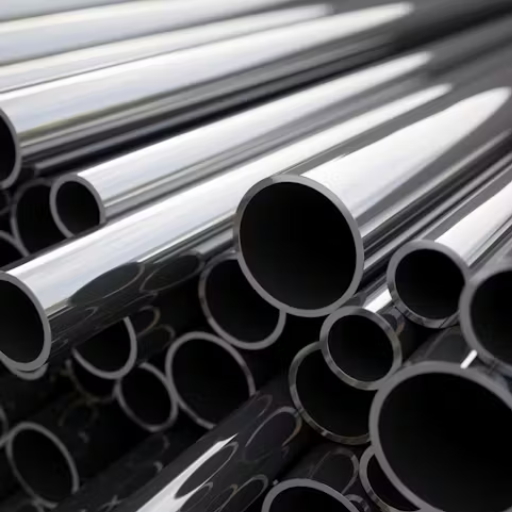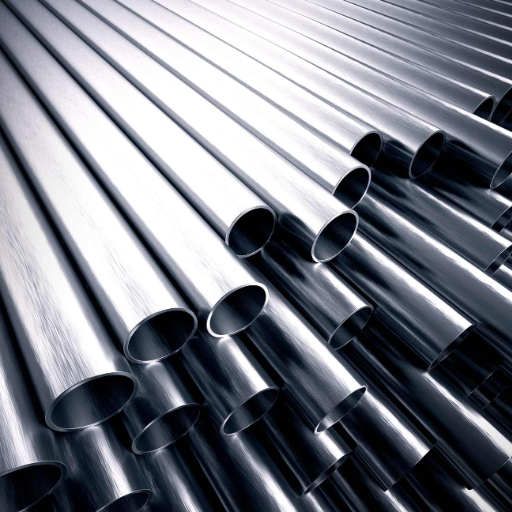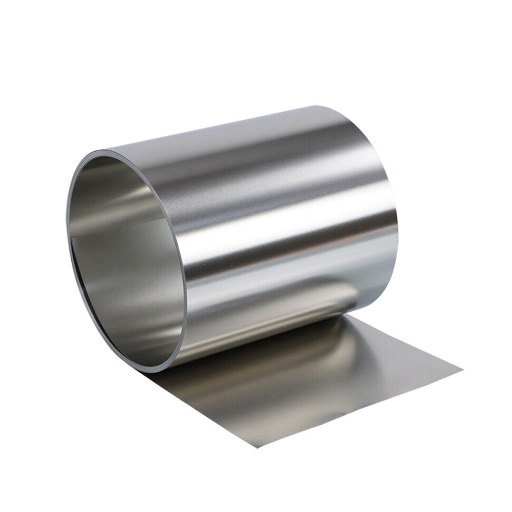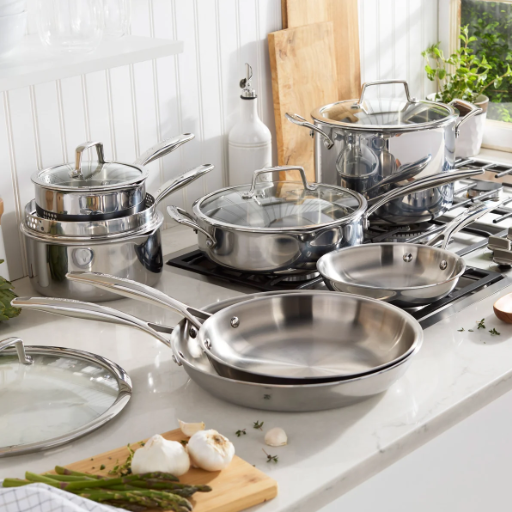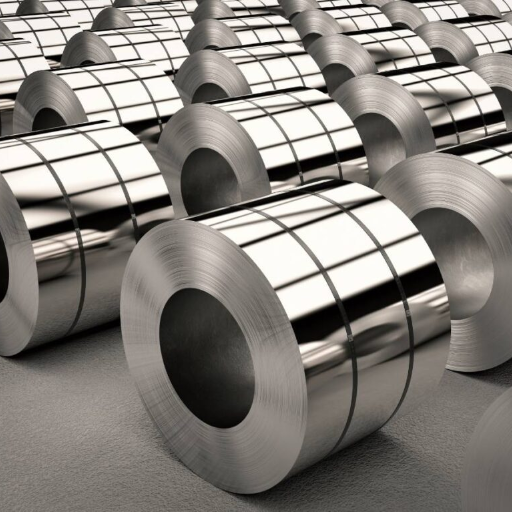Steel structure and construction works, as well as manufacturing and other industry branches strive for the most effective and economical solution that meets their needs – galvanized steel sheet metal. Its affordability coupled with longevity and flexible usage makes it so valuable. This post aims at revealing the specifics of galvanized steel sheet metal starting from its production method, physical properties, and working applications through changing industry sectors. First, we will scrutinize the galvanization process and its effect on steel’s environmental resistance properties. Then, we will look at the crucial features and performance indicators that make galvanized steel so preferred by civil engineers and architects. In the last part of this post, we will identify the supporting industry branches and put light on the reason why galvanized steel demand is soaring at an alarming rate worldwide. In the course of this article, the audience is expected to develop insights on galvanized steel sheet metal and its inherent significance on both commonplace activities and massive undertakings.
What is Galvanized Steel Sheet Metal?

Galvanized steel comes from iron sheets coated with a layer of zinc to prevent rust. The process of galvanization includes dipping the steel into boiling zinc, which dresses the steel with hot liquid zinc and prevents oxidation through water. The zinc coating on the steel improves its lifespan, durability, and performance. Due to its strength, cost efficiency, and its ability to withstand high amounts of stress, galvanized steel is widely used in carpentry, automotive manufacturing, and other industrial activities.
Understanding the Galvanization Process
The galvanization process primarily involves coating steel or iron with a protective layer of zinc to prevent corrosion and improve durability. This process is achieved through either hot-dip galvanizing or electro-galvanizing.
1. Hot-Dip Galvanizing
This is the most widely used method, where the metal is submerged in molten zinc at temperatures around 860°F (460°C). Before the immersion, the steel goes through surface preparation steps, including degreasing, pickling in an acid solution to remove rust, and fluxing to inhibit further oxidation. During immersion, a metallurgical bond forms between the zinc and the steel, resulting in a corrosion-resistant, tightly-adhering coating.
2. Electro-Galvanizing
This modern technique uses an electrochemical process to apply a thin zinc layer. The steel sheet is submerged in an electrolyte solution, and an electric current is used to deposit zinc onto the surface. While it offers a precision coating with a more uniform finish, the resulting layer tends to be thinner compared to hot-dip galvanization, making it ideal for applications that prioritize aesthetics over rugged durability.
Both methods ensure protection by forming a barrier against corrosive elements and through sacrificial protection, where the zinc layer corrodes instead of the base steel. The choice of method depends on the intended application, budget, and performance requirements.
The Role of Zinc Coating in Corrosion Resistance
The corrosion protection of steel by zinc coatings is achieved through two different mechanisms. The first is their role as a barrier which blocks moisture, oxygen, and other corrosion factors from penetrating to the steel. The coating is dense and tightly bonded, making it very effective in preventing the base metal from coming into contact with its surroundings. The second is zinc’s ability to provide cathodic protection due to the coating’s sacrificial nature. If the coating becomes damaged or scratched, zinc preferentially corrodes over the steel as it is more reactive, which protects exposed areas of steel from rusting through galvanic action. This greatly improves the lifespan of the material.
The coating’s durability varies with the thickness of the coating and the type of galvanization applied. Thick and robust layers that are ideal for heavy duty outdoor applications are a characteristic of hot dip galvanizing. Electro-galvanizing, in contrast, has a smoother and more precise finish making it suitable for lighter and more decorative applications. The zinc coating strengthens the lifespan and performance of steel in most environments by protecting it from corrosion even in difficult conditions.
Differences Between Galvanized and Stainless Steel
Galvanized steel and stainless steel differ in their composition and resistance to corrosion. Standard steel is first oxidized then layered with zinc, which serves to prevent rusting through corrosion as well as providing protective armor. Because of this inner zinc layer, Galvanized steel is highly resistant to rust while being used outdoors, especially in wet settings. If the protective layer is stripped off, rust may attack the steel underneath once the zinc layer degrades over time.
Stainless steel, on the contrary, is a composition of Iron, Chromium, and some Nickel with the latter two being the primary constituents. The protective layer formed from the chromium oxide passively provides corrosion protection owing to its 10.5% presence. This form of corrosion resistance is self-healing, making Stainless steel the ideal material in constructions which are more exposed to moisture, salt water or even chemicals, as the stainless steel does not rust easily.
Another differentiating factor would be the price. Galvanized steel is less expensive, available at bulk amounts making it a better option for structures with specific budgets Most plainly noticed are the kitchen pieces, medical utensils and architectural components, where stainless steel has the upper hand being tougher and more pleasing to the eye.
Selecting one over the other varies from project to project and is always subject to factors like the site’s environmental conditions, budget, and expected longevity of the material.
How is Galvanized Steel Sheet Manufactured?

Galvanized steel sheets are produced using galvanization, which is the application of protective zinc coating onto steel sheets so that they do not corrode. Most commonly done is hot-dip galvanization where steel sheets are cleaned to eliminate any impurities, then placed into a bath of roughly 450 degrees Celsius molten zinc. The zinc metallurgically bonds with the steel, forming a protective coating that is resistant to rust. As the sheet cools down, it can be further altered in thickness and finish. This method guarantees extensive and resistant protection from rust, making galvanized steel appropriate for a multitude of uses.
The Hot Dip Galvanization Method Explained
The procedure for hot-dip galvanization is initiated by surface preparation that lays the base for the coating to be applied. It includes the removal of oils through degreasing, pickling, scale and rust removal in an acidic solution, and ending with rinsing to prevent the surface from contamination. When the preparation is ready, the steel is dipped in a bath of molten zinc that is maintained at a temperature of 450 °C (842 °F). While immersed, a chemical reaction takes place whereby several layers of zinc – iron alloy are formed on the surface of the steel deeply anchoring it. When this steel is taken out of the bath, it undergoes cooling and solidification, which also gives these layers a protective shield that is very strong. With this technique, the resultant product has a high level of protection against corrosion, degradation and parameter fatigue with a guarantee for long operational life.
Cold Rolled vs. Hot Rolled Steel: Which is Better?
Choosing between cold rolled steel and hot rolled steel considering their specific application and functionality is vital. Hot rolled steel has a high processing temperature which allows for cheaper production costs, making it ideal for construction, railroad tracks, and equipment operations. Its ability to maintain malleable at high temperatures means that larger structures can be created with this material as well.
Cold rolled steel goes through more processes while at room temperature, and it is ideal for surfaces that require higher aesthetic appeal and precision. This makes it a better fit for automobile parts, furniture, and precise machinery components. Cold rolling also enables the steel to gain additional strength through strain hardening which helps immensely during stress bearing situations that require substantial support.
At the end of the day, budgetary requirements and the function specifications of the project aid the most in decision making. Cold rolled steel provides precision and higher surface finishes for demanding tasks, while hot rolled steel offers adequate performance for more simple tasks, while being cheaper.
Common Applications in the Construction Industry
The economical, multi-functional, and adaptable nature of hot-rolled steel makes it suitable for construction work. It is often used in the production of I-beams, railroad tracks, sheet metal used for bridges, and other framework. It is very easy for hot-rolled steel to fuse in high temperature processes; meaning it can change shape with great ease.
Cold rolled steel, by itself, is very useful in any situation that requires tight tolerances and a fine precision surface finish. Such attributes make cold rolled steel ideal for architectural features as well as highly sophisticated structural elements, for example, load-bearing beams and framework. Moreover, cold rolled sheet steel is very strong as well because of strain hardening. This characteristic ensures that cold rolled steel can be reliably and durably used in high-rise buildings and heavy load structures.
When deciding whether to use hot or cold rolled sheet steel the determining factors revolve around aesthetic appeal, project type, structural needs, and the budget available. Each material brings different useful attributes to the table that allow engineers and architects to make the best decision to suit their needs.
Why Choose Galvanized Steel Sheet Over Other Metals?

Due to its corrosion resistance, low-cost pricing, and structural integrity, galvanized steel sheets dominate other metals. This steel requires minimal expensive upkeep, is simple to work with, and offers affordability. The zinc covering that sustains the galvanization touch renders it useful even in unfavorable atmospheres by safeguarding against rust while extending the life span of the material. This makes it perfect for outdoor uses including roofing, fencing, or other structural components. In addition, aged steel gives great value when contrasted to stainless steel. Nevertheless, its resilience and strength are still preserved. All these characteristics further solidify the appropriateness and usefulness of metallic sheets for industrial and construction projects.
Advantages of Using Galvanized Metal Sheets
- Corrosion Resistance
One of the most significant advantages of galvanized metal sheets is their exceptional resistance to rust and corrosion. The protective zinc coating forms a barrier that shields the steel core from exposure to moisture, chemicals, and other environmental factors. This makes galvanized sheets ideal for applications in harsh or outdoor environments, ensuring long-lasting performance.
- Cost-Effectiveness
Compared to other metal options such as stainless steel, galvanized sheets are more cost-effective both in terms of initial investment and maintenance. The galvanization process reduces the need for frequent repairs or replacements, saving time and money over the material’s lifetime.
- Durability and Longevity
Galvanized steel sheets are known for their impressive strength and durability. The zinc coating not only protects against corrosion but also enhances the structural integrity of the steel, offering a lifespan of 20 to 50 years with minimal maintenance, even in demanding conditions.
- Versatility in Applications
Due to their combination of strength and resistance, galvanized sheets are widely used for a variety of industrial, agricultural, and construction purposes. Common applications include roofing, fencing, HVAC ducts, automotive components, and structural framework.
- Ease of Processing
Galvanized steel sheets are easy to work with during manufacturing and fabrication processes. They can be cut, welded, and formed without compromising the protective zinc coating, making them highly versatile in industrial applications.
- Environmental Sustainability
The galvanization process is environmentally friendly, and the material itself is recyclable. This contributes to reduced environmental impact, making galvanized steel a sustainable choice for eco-conscious industries.
Factors Affecting the Durability of Galvanized Sheets
The durability of galvanized sheets is influenced by several key factors, which can vary depending on environmental and operational conditions:
- Environmental Conditions
The surrounding environment significantly impacts the lifespan of galvanized steel. Exposure to highly corrosive conditions, such as marine environments with high salt concentrations or industrial zones with acidic emissions, can accelerate the degradation of the zinc coating. Mild urban or rural environments, by contrast, offer a much longer life span for the material.
- Thickness of the Zinc Coating
The durability of galvanized steel is directly correlated to the thickness of the zinc coating. Thicker coatings provide greater protection against corrosion as they delay the exposure of the underlying steel to environmental factors. Standards such as ASTM and ISO specify recommended coating thicknesses for various applications.
- Mechanical Damage
Scratches, dents, or other mechanical impacts that compromise the protective zinc layer can lead to localized corrosion. Proper handling, storage, and maintenance practices are essential to minimize physical damage during transportation and usage.
- Exposure to Moisture and Chemicals
Prolonged exposure to moisture, particularly when combined with substances like chlorine or sulfur compounds, can diminish the effectiveness of the zinc coating. Areas frequently exposed to condensation or standing water may require additional protective measures, such as sealants or regular inspections.
By optimizing these factors, galvanized sheets can achieve maximum durability, ensuring cost-effectiveness and reliability over time in various applications.
Understanding the Environmental Impact
Using galvanized products and their sheets poses some advantages while also presenting some risks to the environment. For one, galvanization allows products made from steel to last longer because they do not corrode. This means that the need for steel replacements is significantly reduced, conserving raw materials and lessening manufacturing emissions. Furthermore, zinc, which is the main component of galvanization, is readily available and recyclable, thus adding to the sustainability of galvanized products.
Nonetheless, the galvanization process does not come without an expense; it has a toll on energy and emissions. Processes like hot-dip galvanizing, which require high temperatures, need to be powered, which ultimately results in greenhouse gas emissions from power plants as well. In addition, environmental management is further challenged with the production and disposal of byproducts, which include zinc ash and zinc dross. When the galvanized sheets are put to use, they are also subjected to environmental conditions. A result of this is leaching of zinc and heavy metals into ecosystems surrounding the sheets.
Environmental practitioners recommend best practices to minimize these repercussions, such as closed-loop recycling in the production phase, adhering to environmental regulations, and coming up with alternative coatings with diminished ecological impact. With these measures in place, not only would the environmental impact of galvanized sheets be contained, but their performance would also improve.
What are the Common Sizes and Thicknesses of Galvanized Steel Sheets?

Galvanized steel sheets are available in a variety of sizes and thicknesses to suit different industrial and commercial applications. Commonly, the thickness ranges from 0.12 mm to 3 mm, depending on the specific use case. Sheet widths typically vary between 600 mm and 1250 mm, with standard lengths offered in both pre-cut and roll form. Customized sizing options are also available to meet unique project requirements. These standardized dimensions make galvanized steel sheets versatile for applications in construction, automotive, and manufacturing industries.
How to Determine the Right Gauge for Your Project
Selecting the correct gauge for your project can be determined through its intended use, strength requirements, and weight considerations. It’s vital to first analyze the structural needs of your project. For instance, high strength applications will usually require thicker gauges (which means lower gauge numbers), whilst light or decorative applications will be fine with thinner gauges (higher numbers). The surrounding environment must also be taken into account, particularly if there are harsh corrosive conditions which may need additional coatings or treatments beyond the base thickness. For specific measures, standardized gauge thickness charts can come in handy as they help projects meet their specifications. Remember to also analyze material and cost limitations, as it is likely that thicker sheets (gauge) will add more expense to the project, although they may increase enduring durability. The optimal goal is to try and find the gauge that meets functional demands while accomplishing the desired application engineering.
Standard Sizes and Custom Cut-to-Size Options
Standard metal sheet gauges are usually supplied in predetermined industry sizes based on the type of material to be used, which includes steel, aluminum, and stainless steel. For instance, steel plates usually have dimensions of 36 x 96 inches and 48 x 120 inches, whereas aluminum sheets, in addition to the previously stated dimensions, also include 48 x 96 inches. These standard sizes simplify the manufacturing process and are ideal in meeting a wide range of needs. However, precision cutting is offered by a majority of suppliers for such projects which require greater accuracy. Customization leads to incredible material savings, lesser waste, and the need for specific designs is easily achieved.
Advanced cutting includes fabrication techniques such as etching, or laser and CNC machining, which deliver unparalleled accuracy by set tolerances. When choosing between standard and custom options, consider timelines, tolerances, project complexity, and custom budgets. Working together with the suppliers while providing accurate dimensions assists in ensuring the project exceeds expectations on material utilization, which will be in excess.
How to Maintain and Protect Galvanized Steel Sheets?

In preserving galvanized steel sheets, a systematic process engaging in constant evaluation, cleaning, and maintenance is important. Regularly check the sheets for damage like scratches or rust spots, which could allow the steel to begin corroding. A gentle clean using soap and water will also aid in getting rid of contaminants or salt that may further damage the strain. Remember to not use harsh chemicals or abrasively clean, as this will destroy the zinc coating. In corrosive and high humidity environments, consider applying additional coatings such as epoxy paint to aid in covering the galvanization layer and strengthening it. Good storage also helps; using dry and protective spaces alongside avoiding direct contact with other metals mitigates a potential risk. Following these processes ensures the galvanized steel sheets keep up their promised durability and longevity.
Methods of Preventing Rust and Corrosion
In preventing rust or corrosion of galvanized steel, proactive measures and periodic maintenance calls for great attention. First, ensure proper cleaning and maintenance by routinely washing away grime, chemical residue, and dirt with soaps and water. Avoid strong abrasive materials and chemicals as they will remove or damage the protective zinc layer. Second, where possible, maintain a controlled environment that reduces exposure to moisture, high humidity, and other corrosive elements. Adopting measures like dehumidifiers and protective barrier coatings, including epoxy or polyurethane sealants, are recommended. Third, conduct checks or inspections of the steel for any wear and tear regularly. Potential problems like scratches or soft rust spots should be attended to promptly to further prevent further corrosion. Proper storage and handling conditions like keeping the steel in a ventilated dry space away from direct contact with other reactive metals is important. The combined measures serve the required goal, which is to protect the galvanized steel from corrosion.
Regular Maintenance Tips for Longevity
To ensure optimized performance and longevity of equipment or systems, adhering to regular maintenance practices is critical. Below are detailed maintenance guidelines synthesized from leading industry resources:
- Adhere to Manufacturer Guidelines
Always follow the maintenance schedule recommended by the manufacturer. This includes routine inspections, servicing intervals, and the replacement of components specified in the user manual to prevent premature wear and tear.
- Regular Cleaning and Lubrication
Regularly clean components to remove dirt, dust, and debris that may accumulate over time and impact functionality. Additionally, ensure moving parts are adequately lubricated to reduce friction and extend operational lifespans.
- Monitor for Wear and Tear
Conduct thorough inspections for signs of degradation, such as cracks, corrosion, or uneven wear. Promptly replacing damaged parts can prevent minor issues from escalating into major failures.
- Maintain Optimal Operating Conditions
Avoid operating equipment under extreme conditions, such as excessive heat, humidity, or instability, as these can reduce efficiency and cause long-term damage.
- Utilize Professional Servicing
Engage certified technicians for in-depth inspections and repairs at regular intervals. Their expertise ensures that hidden issues are diagnosed and resolved, maintaining the overall integrity of the system.
By implementing these measures consistently, you can significantly enhance the lifespan and reliability of your equipment or systems.
Repairing Damaged Zinc Coatings
The repair of damaged zinc coatings typically involves three primary methods as specified by industry standards such as ASTM A780. These methods include:
- Zinc-Rich Paint Application: This process involves applying zinc-rich paints, which contain high levels of zinc in either organic or inorganic formulations, directly to the affected area. The high zinc content ensures cathodic protection, while providing excellent adhesion and corrosion resistance. Proper surface preparation, such as cleaning and removing contaminants, is critical for optimal results.
- Thermal Spraying: Often referred to as metallizing, this involves the application of molten zinc through a specialized spray gun onto the damaged surface. This method ensures high bond strength and durability, akin to hot-dip galvanizing. Thermal spraying is particularly suitable for larger repairs or areas exposed to severe environmental conditions.
- Zinc Soldering or Zinc-Based Repair Rods: This technique involves heating zinc-based repair sticks or rods and applying the molten zinc directly to the damaged area. It is ideal for small, localized repairs and provides a durable, long-lasting fix by restoring the zinc layer’s protective properties.
Each method offers varying levels of effectiveness depending on the extent of the damage, environmental exposure, and the specific requirements of the structure. Before repair, the surface must be prepared by removing rust, dirt, or any loose material to ensure strong adhesion and corrosion resistance. The chosen method should comply with relevant standards to maintain the structural and functional integrity of the coating.
References
Frequently Asked Questions (FAQ)
Q: What is galvanized steel sheet metal and what are its key properties?
A: Galvanized steel sheet metal is a type of steel product that has been coated with a protective layer of zinc to prevent rusting. Key properties include excellent corrosion resistance, ductility and ease of fabrication, and outstanding durability, making it ideal for a wide range of applications, including automotive and diy projects.
Q: How is a galvanized steel plate different from a regular steel plate?
A: A galvanized steel plate is coated with zinc, providing a protective barrier against corrosive environments, unlike a regular steel plate which may require additional protective measures. This zinc coating also gives galvanized steel its rust-free property.
Q: What are the common applications for galvanized sheet metal?
A: Galvanized sheet metal is widely used in various fields such as construction, automotive, appliance manufacturing, and diy projects due to its durability and excellent corrosion resistance. It’s also popular for outdoor environments and HVAC systems.
Q: Can galvanized steel be welded, and what precautions should be taken?
A: Yes, galvanized steel can be welded, but it’s important to ensure adequate ventilation to avoid inhaling zinc fumes. The zinc coating can also affect weld quality, so specific welding techniques and filler materials may be required.
Q: What is the difference between hot-dip galvanizing and galvannealed steel?
A: Hot-dip galvanizing involves dipping steel into a bath of molten zinc, creating a protective outer layer. Galvannealed steel, on the other hand, is heat-treated after galvanizing to produce a zinc-iron alloy coating, which can be more suitable for certain fabrication methods due to its improved paint adhesion.
Q: How does the width and thickness of galvanized steel plate affect its usage?
A: The width and thickness of a galvanized steel plate determine its structural properties and suitability for different applications. Thicker plates are typically used in structural and heavy-duty applications, while thinner plates are suitable for lighter, more flexible uses.
Q: How should galvanized steel be maintained to ensure long-term performance?
A: To maintain galvanized steel’s performance, it’s important to regularly inspect it for damage, ensure adequate drainage and ventilation, and avoid prolonged exposure to highly corrosive environments. Cleaning with mild soap and water can help maintain its protective coating.
Q: Is galvanized steel environmentally friendly?
A: Galvanized steel is considered environmentally friendly due to its long lifespan, reducing the need for frequent replacements. The zinc and steel used are also recyclable, making it a sustainable choice for many applications.
Q: What are the limitations of using galvanized steel in fabrication?
A: While galvanized steel offers many advantages, it may not be suitable for high-temperature applications due to potential zinc embrittlement. Additionally, the zinc coating can influence the flatness and handling of the steel during fabrication processes like laser cutting.
Q: How can I determine the right quantity of galvanized steel for my project?
A: To determine the right quantity of galvanized steel for your project, consider using an online calculator or contacting a supplier to discuss your specific needs, including dimensions, thickness, and application requirements.

